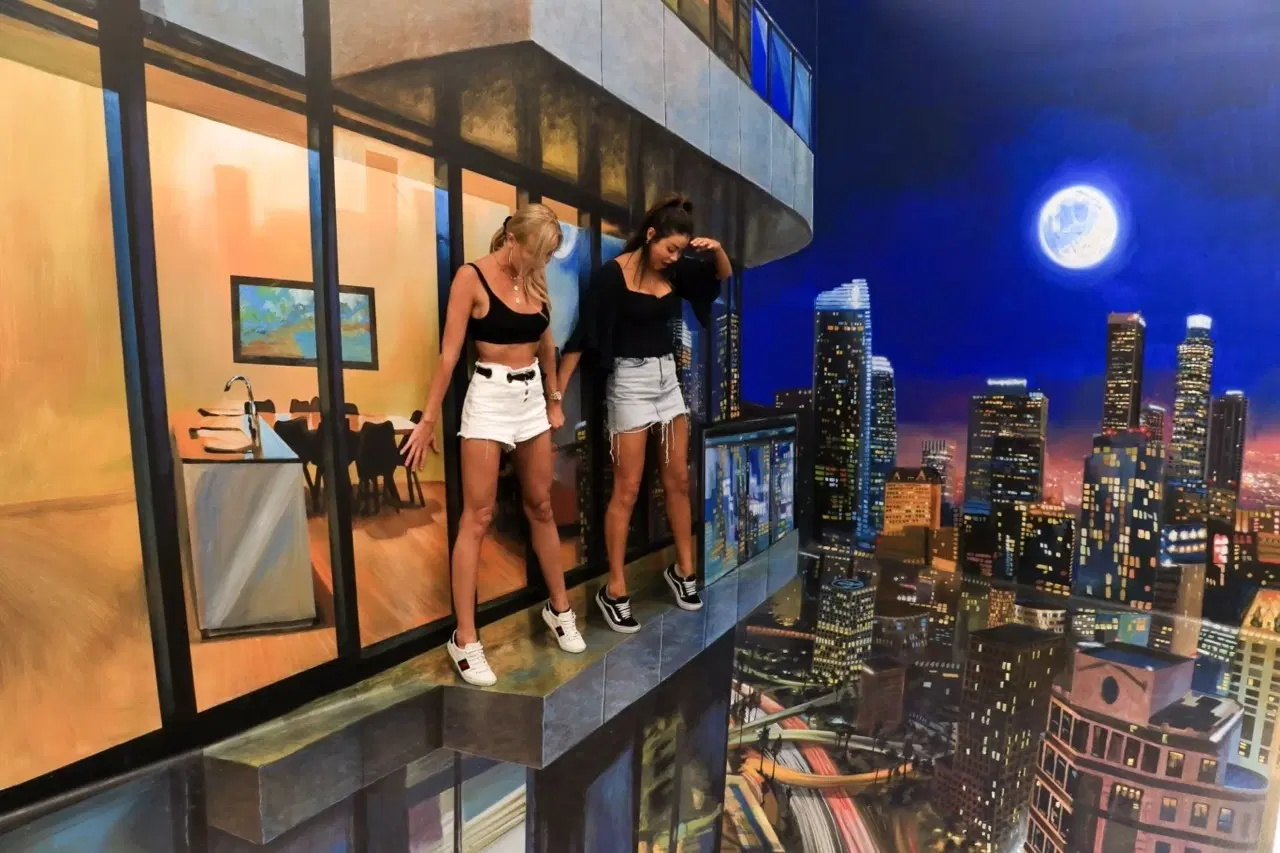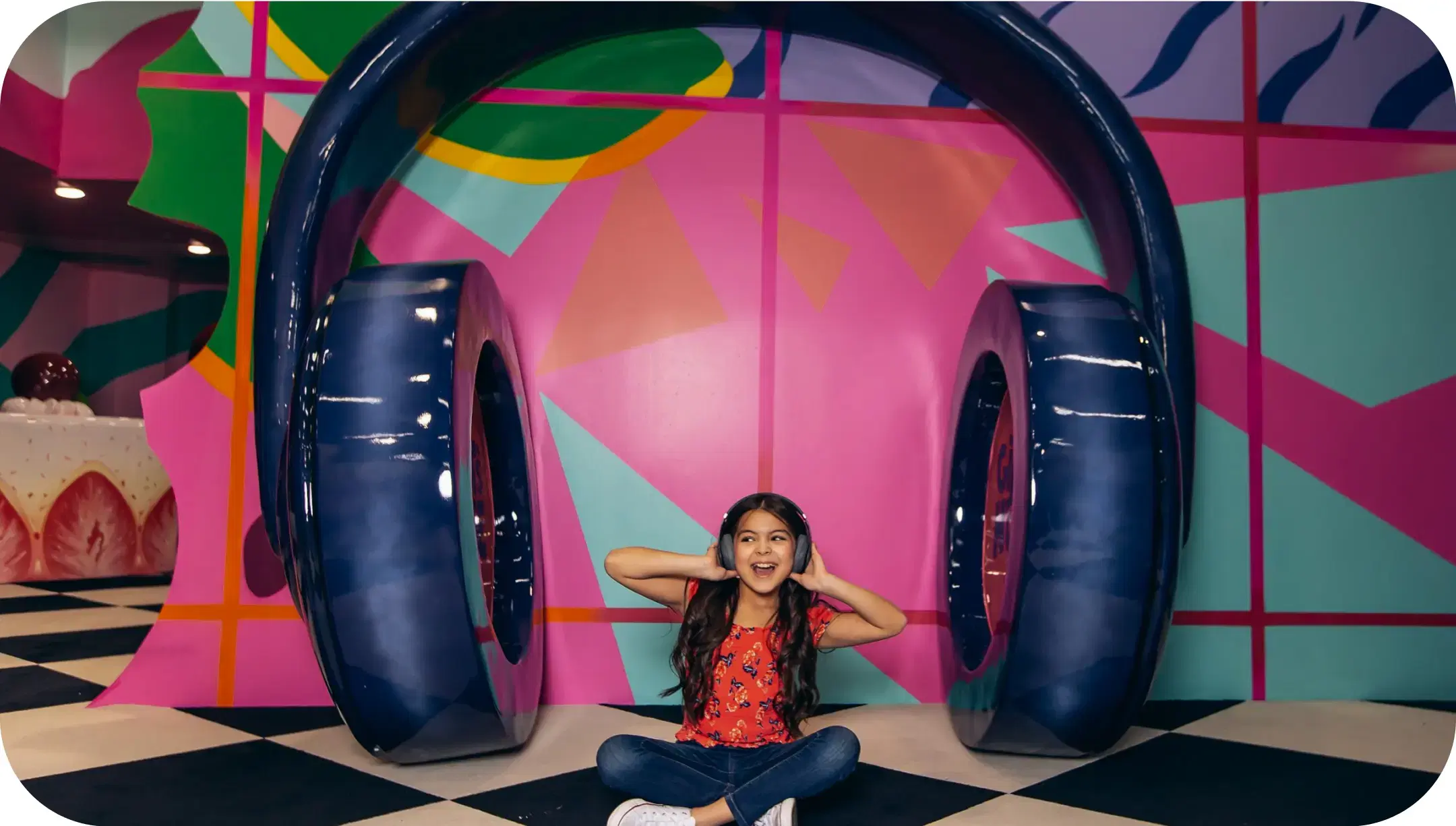Ennis House, designed by Frank Lloyd Wright in 1923, is a testament to his innovative approach to architecture. Located in Los Angeles, this residence showcases Wright’s distinctive textile block construction, utilizing over 27,000 interlocking concrete blocks. The design draws inspiration from ancient Mayan temples, evident in the intricate relief patterns adorning the blocks, which contribute to the house’s unique aesthetic.
The structure’s layout is meticulously planned, with the house rising in stages across a concrete platform, buttressed by a retaining wall. This design not only enhances its visual appeal but also integrates the building seamlessly into the hillside terrain of Los Angeles. Wright’s use of concrete, a novel material for residential construction in the 1920s, reflects his forward-thinking vision for affordable and durable housing solutions.
Inside, the Ennis House features expansive living spaces, large windows, and a harmonious blend of indoor and outdoor areas. The patterned blocks allow for dynamic light and shadow play throughout the day, creating an ever-changing interior atmosphere. Wright’s attention to detail and commitment to integrating architecture with nature are evident in every aspect of this remarkable Los Angeles residence.
Historical Context and Cultural Impact
Since its completion in 1924, Ennis House has played a significant role in Los Angeles’ architectural heritage. Commissioned by Charles and Mabel Ennis, the house exemplifies Wright’s exploration of geometric forms and his fascination with ancient cultures. Over the years, it has become an iconic example of Mayan Revival architecture in the United States.
Beyond its architectural significance, Ennis House has made substantial contributions to popular culture. Its distinctive appearance has made it a sought-after filming location for numerous movies and television shows. Notably, it featured in the 1982 science fiction film “Blade Runner,” where its unique design complemented the movie’s futuristic aesthetic. Such appearances have cemented the house’s status as a cultural landmark in LA.
The house’s influence extends to inspiring other architectural works and designs. Its innovative use of materials and integration with the natural landscape have been studied and admired by architects and enthusiasts alike. Ennis House stands as a testament to Frank Lloyd Wright’s enduring legacy and his impact on modern architecture in Los Angeles and beyond.
Location and Accessibility
Situated at 2607 Glendower Avenue in the Los Feliz neighborhood of Los Angeles, Ennis House occupies a commanding position overlooking the city. Its hillside location offers panoramic views of LA, enhancing its allure for architecture enthusiasts and visitors. The surrounding area, characterized by winding roads and lush greenery, provides a serene backdrop to this architectural gem.
While Ennis House is a private residence, provisions exist for limited public access. A stipulation from its 2011 sale requires the house to be accessible to the public for at least 12 days each year. Prospective visitors interested in touring the interior are advised to contact the Ennis House Foundation directly to inquire about available tour dates and make necessary arrangements.
For those wishing to view the house from the exterior, it remains visible from various vantage points in the neighborhood. However, visitors should be mindful of local parking restrictions and the privacy of residents in this Los Angeles community. Planning visits during designated public access days or joining guided tours that include the Ennis House can provide a more comprehensive experience.
Connection to World of Illusions
A visit to Ennis House can be complemented by exploring the World of Illusions in Los Angeles, an interactive museum that challenges perceptions and engages the imagination. This attraction features several exhibits, each offering a unique experience that parallels the innovative spirit of Frank Lloyd Wright’s designs.
One of the highlights is the Upside Down House, comprising seven rooms where everything is inverted, providing a disorienting yet fascinating experience. This exhibit encourages visitors to view everyday environments from a new perspective, much like Wright’s architectural approach in Los Angeles.
Another notable exhibit is the Giant’s House, where visitors find themselves surrounded by oversized everyday objects, creating the illusion of having shrunk in size. This playful manipulation of scale resonates with Frank Lloyd Wright’s innovative use of space and form in structures like the Ennis House. Additionally, the Museum of Illusions offers over 30 3D illusions and paintings that captivate the senses, while the Smash It! room allows guests to release energy by smashing plates, adding a therapeutic dimension to the visit.
Visitor Information for World of Illusions
The World of Illusions is located at 6751 Hollywood Boulevard in Los Angeles, making it a convenient addition to a day of architectural exploration. The museum operates daily from 11:00 AM to 10:00 PM, providing ample opportunity to incorporate it into your itinerary. Tickets can be purchased online or at the venue, with options ranging from single-exhibit admissions to all-access passes.
Admission prices vary depending on the selected exhibits. For instance, access to all 3D illusion exhibits is available, with additional options to include the Giant’s House and Upside Down House for a more comprehensive experience. It’s advisable to check the official website for the most current pricing and any available promotions.
Visitors are encouraged to allocate at least an hour to fully engage with the exhibits, though many find themselves spending more time immersed in the interactive displays. The museum’s location on Hollywood Boulevard also places it in proximity to other attractions, dining options, and entertainment venues in Los Angeles, allowing for a full day of exploration and enjoyment.
Preservation Efforts and Current Status of Ennis House
Over the years, Ennis House has undergone significant restoration efforts to preserve its structural integrity and historical value. Challenges such as damage from earthquakes and environmental factors necessitated comprehensive repairs. In 2005, the house was added to the National Trust for Historic Preservation’s list of the “11 Most Endangered Historic Places,” highlighting the urgency of its preservation.
Efforts to restore Ennis House began in earnest after it was placed on the endangered list. Major renovation projects focused on stabilizing the structure and repairing the intricate textile blocks. In 2011, the house was sold to a private owner with the stipulation that it remain accessible to the public for limited tours. These preservation efforts have ensured that the Ennis House remains an iconic landmark in LA.
Today, Ennis House stands as a testament to the enduring impact of Frank Lloyd Wright’s architectural vision. Its intricate patterns and commanding presence remind us of the possibilities of merging creativity with structural ingenuity. As preservation efforts continue, this masterpiece will remain an enduring symbol of innovation for generations to come.
What makes Ennis House a significant architectural landmark?
Ennis House, designed by Frank Lloyd Wright, is a masterpiece of Mayan Revival architecture in Los Angeles. Its intricate textile block construction and hillside location make it a unique and celebrated example of innovative residential design.
Can visitors explore both Ennis House and the World of Illusions in Los Angeles?
While Ennis House is a private residence with limited public access, visitors can plan a day in Los Angeles to enjoy other attractions like the World of Illusions, known for its interactive exhibits and creative spaces.
Where is Ennis House located, and is it visible to the public?
Ennis House is located in the Los Feliz neighborhood of Los Angeles. Although access to the interior is limited, the house is visible from nearby streets, offering stunning views of this architectural icon.







